Common side effects of singulair. Singulair (Montelukast): Comprehensive Guide to Side Effects, Uses, and Precautions
What are the common side effects of Singulair. How does Montelukast work for asthma and allergies. When should you avoid taking Singulair. What are the potential mental health risks associated with Montelukast.
Understanding Singulair: Uses and Mechanism of Action
Singulair, also known by its generic name Montelukast, is a medication primarily used to treat asthma and allergic rhinitis. It belongs to a class of drugs called leukotriene receptor antagonists. These medications work by blocking the action of leukotrienes, which are substances in the body that cause inflammation in the airways and nasal passages.
Primary Uses of Singulair
- Maintenance treatment of asthma
- Prevention of exercise-induced bronchoconstriction
- Relief of symptoms of allergic rhinitis (both seasonal and perennial)
Does Singulair provide immediate relief for asthma symptoms? No, Singulair is not a rescue medication. It’s designed for long-term control and prevention of asthma symptoms. Patients should continue to use their prescribed quick-relief inhalers for sudden asthma attacks.

Common Side Effects and Precautions
While Singulair is generally well-tolerated, it can cause various side effects. It’s crucial for patients to be aware of these potential reactions and report any unusual symptoms to their healthcare provider.
Frequently Reported Side Effects
- Stomach pain
- Diarrhea
- Fever or flu-like symptoms
- Headache
- Upper respiratory infections (cold symptoms, sinus pain, cough, sore throat)
- Ear pain or fullness
Can Singulair cause allergic reactions? Yes, although rare, some individuals may experience severe allergic reactions to Montelukast. Symptoms of an allergic reaction may include hives, difficulty breathing, and swelling of the face, lips, tongue, or throat. Seek immediate medical attention if these symptoms occur.
Mental Health Concerns and FDA Warnings
In recent years, the FDA has issued warnings about potential mental health side effects associated with Singulair use. These concerns have led to the addition of a Boxed Warning, the FDA’s strongest warning, to the drug’s labeling.

Neuropsychiatric Side Effects
- Agitation and aggressive behavior
- Anxiety and depression
- Confusion and memory problems
- Suicidal thoughts or actions
- Hallucinations and sleep disturbances
- Stuttering and uncontrolled muscle movements
How quickly can mental health side effects appear after starting Singulair? Mental health side effects can occur at any time during treatment with Montelukast, even after just one dose. Patients and caregivers should be vigilant and report any unusual changes in behavior or mood to a healthcare provider immediately.
Dosage Guidelines and Administration
Proper dosing of Singulair is essential for its effectiveness and safety. The dosage can vary based on the patient’s age, the condition being treated, and other individual factors.
Standard Dosing for Adults and Children
- Adults and adolescents 15 years and older: 10 mg tablet once daily in the evening
- Children 6 to 14 years old: 5 mg chewable tablet once daily in the evening
- Children 2 to 5 years old: 4 mg chewable tablet or oral granules once daily in the evening
- Children 12 to 23 months old: 4 mg oral granules once daily in the evening
Is it necessary to take Singulair with food? Singulair can be taken with or without food. However, for the treatment of asthma, it’s typically recommended to take the medication in the evening.

Drug Interactions and Precautions
While Singulair has relatively few drug interactions compared to some other medications, it’s still important to be aware of potential conflicts and take necessary precautions.
Notable Drug Interactions
- NSAIDs (e.g., aspirin, ibuprofen) in aspirin-sensitive patients
- Phenobarbital, rifampin, and other strong CYP3A4 inducers
- Gemfibrozil and other strong CYP2C8 inhibitors
Should patients avoid aspirin while taking Singulair? Patients with a known sensitivity to aspirin should avoid taking aspirin or other NSAIDs while using Montelukast, as it may increase the risk of adverse reactions.
Special Populations and Considerations
Certain groups of patients may require special attention when considering Singulair use. These include pregnant women, breastfeeding mothers, elderly patients, and those with specific medical conditions.
Pregnancy and Breastfeeding
Is Singulair safe during pregnancy? Limited data suggest that Montelukast use during pregnancy does not increase the risk of major birth defects. However, pregnant women should consult their healthcare provider before using this medication. For breastfeeding mothers, Montelukast is generally considered compatible with breastfeeding, but caution is advised.

Elderly Patients
No specific dosage adjustments are required for elderly patients. However, as with any medication, older adults may be more sensitive to side effects and should be monitored closely.
Patients with Liver Impairment
Patients with mild to moderate hepatic insufficiency do not require dosage adjustment. However, there is limited data on the use of Montelukast in patients with severe hepatic impairment.
Long-term Use and Effectiveness
Singulair is designed for long-term use in the management of chronic conditions like asthma and allergic rhinitis. However, its effectiveness can vary among individuals, and regular follow-ups with healthcare providers are essential.
Monitoring Long-term Efficacy
- Regular pulmonary function tests for asthma patients
- Tracking symptom frequency and severity
- Assessing quality of life improvements
- Evaluating the need for rescue medications
How long does it take for Singulair to show its full effect? While Montelukast begins to work immediately, it may take up to a week for patients to notice significant improvements in their symptoms. Consistent use as prescribed is key to achieving optimal results.

Alternative Treatments and Comparisons
While Singulair is an effective option for many patients, it’s not the only treatment available for asthma and allergic rhinitis. Understanding how it compares to other medications can help patients and healthcare providers make informed decisions.
Alternatives to Singulair
- Inhaled corticosteroids (e.g., fluticasone, budesonide)
- Long-acting beta-agonists (e.g., salmeterol, formoterol)
- Combination inhalers (corticosteroid + long-acting beta-agonist)
- Antihistamines (for allergic rhinitis)
- Nasal corticosteroids (for allergic rhinitis)
How does Singulair compare to inhaled corticosteroids in asthma treatment? While both medications can be effective, inhaled corticosteroids are generally considered the first-line treatment for persistent asthma. Singulair may be used as an add-on therapy or as an alternative for patients who cannot tolerate inhaled corticosteroids.
In conclusion, Singulair (Montelukast) remains an important medication in the treatment of asthma and allergic rhinitis. However, its use requires careful consideration of potential side effects, particularly regarding mental health. Patients should work closely with their healthcare providers to determine if Singulair is the right choice for their individual needs and to monitor for any adverse effects during treatment.

Singulair (Montelukast) – Side Effects, Interactions, Uses, Dosage, Warnings
uses
What is Singulair (Montelukast) used for?
- Allergic Rhinitis
- Asthma — Maintenance
- Bronchospasm Prophylaxis
warnings
What is the most important information I should know about Singulair (Montelukast)?
You should not use montelukast if you are allergic to it.
Tell your doctor if you have ever had:
- mental illness or psychosis; or
- asthma, or a history of severe allergic reaction (sneezing, runny or stuffy nose, wheezing, shortness of breath) after taking aspirin or another NSAID.
The chewable tablet may contain phenylalanine and could be harmful if you have phenylketonuria (PKU).
Tell your doctor if you are pregnant or breastfeeding.
Do not give this medicine to a child without a doctor’s advice.
User Reviews & Rating
Overall rating for Singulair (Montelukast)
2. 9
9
out of 5
Side Effects
Easy to Use
Effectiveness
Read Singulair (Montelukast) Reviews
Side Effects
What are the side effects of Singulair (Montelukast)?
Get emergency medical help if you have signs of an allergic reaction: hives, blisters, severe itching; difficult breathing; swelling of your face, lips, tongue, or throat.
Tell your doctor right away if you have signs of blood vessel inflammation: flu-like symptoms, severe sinus pain, a skin rash, numbness or a “pins and needles” feeling in your arms or legs.
Some people using montelukast have had new or worsening mental problems. Stop taking this medicine and call your doctor right away if you have unusual changes in mood or behavior, such as:
- agitation, aggression, feeling restless or irritable;
- anxiety, depression, confusion, problems with memory or attention;
- stuttering, tremors, uncontrolled muscle movements;
- suicidal thoughts or actions;
- hallucinations, sleep problems, vivid, dreams, sleep-walking; or
- compulsive or repetitive behaviors.

Common side effects may include:
- stomach pain, diarrhea;
- fever or other flu symptoms;
- ear pain or full feeling, trouble hearing;
- headache; or
- cold symptoms such as runny or stuffy nose, sinus pain, cough, sore throat.
This is not a complete list of side effects and others may occur. Call your doctor for medical advice about side effects. You may report side effects to FDA at 1-800-FDA-1088.
Pregnancy & Breastfeeding
Can I take Singulair (Montelukast) if I’m pregnant or breastfeeding?
Tell your doctor if you are pregnant or breastfeeding.
Interactions
What drugs and food should I avoid while taking Singulair (Montelukast)?
Avoid situations or activities that may trigger an asthma attack.
If your asthma symptoms get worse when you take aspirin, avoid taking aspirin or other NSAIDs (nonsteroidal anti-inflammatory drugs) such as ibuprofen (Advil, Motrin), naproxen (Aleve), celecoxib, diclofenac, indomethacin, meloxicam, and others.
Dosage Guidelines & Tips
How to take Singulair (Montelukast)?
Use Singulair (Montelukast) exactly as directed on the label, or as prescribed by your doctor. Do not use in larger or smaller amounts or for longer than recommended.
What should I do if I missed a dose of Singulair (Montelukast)?
Skip the missed dose and use your next dose at the regular time. Do not use two doses at one time.
Overdose Signs
What happens if I overdose on Singulair (Montelukast)?
If you think you or someone else may have overdosed on: Singulair (Montelukast), call your doctor or the Poison Control center
(800) 222-1222
If someone collapses or isn’t breathing after taking Singulair (Montelukast), call 911
911
What to Expect
Montelukast starts to lower leukotriene levels in your body right away, but it may take about a week before you notice the full benefits.
You can safely use this medicine for a long period of time. It will only work while you’re taking it.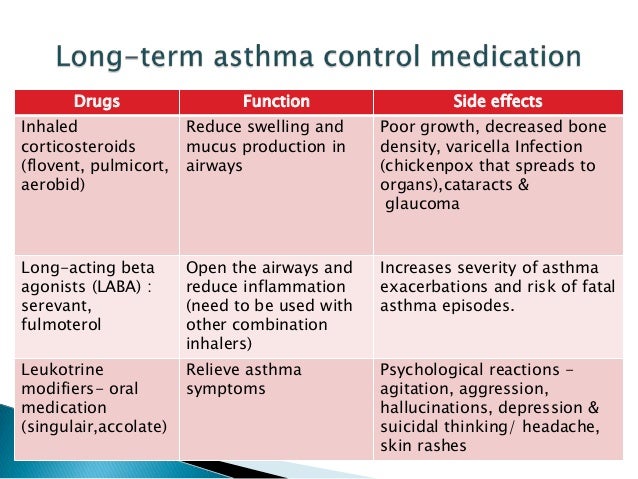
Secondary Uses
Singulair is sometimes prescribed “off-label” to treat other medical conditions, such as hives or chronic obstructive pulmonary disorder (COPD).
Images
SINGULAIR, MSD 117
Color: brown
Shape: square
Imprint: SINGULAIR, MSD 117
54 157
Color: brown
Shape: round
Imprint: 54 157
54 144
Color: pink
Shape: oval
Imprint: 54 144
FDA requires Boxed Warning about serious mental health side effects for asthma and allergy drug montelukast (Singulair); advises restricting use for allergic rhinitis
We reviewed case reports submitted to FDA, conducted an observational study using data from FDA’s Sentinel System, and reviewed observational and animal studies in the published literature.
We evaluated reporting trends for all neuropsychiatric adverse events associated with montelukast use reported in the FDA Adverse Event Reporting System (FAERS) database from the date of FDA approval in February 1998 through May 2019. There was an increase in reporting of neuropsychiatric events around the time of the initial communications from FDA in 2008. Other increases in reporting were due to duplicate reports or foreign reports. Despite outside influences on reporting patterns, we continue to receive reports of serious neuropsychiatric events with montelukast.
There was an increase in reporting of neuropsychiatric events around the time of the initial communications from FDA in 2008. Other increases in reporting were due to duplicate reports or foreign reports. Despite outside influences on reporting patterns, we continue to receive reports of serious neuropsychiatric events with montelukast.
We also performed a focused evaluation of completed suicides. Our analysis included only reports submitted to FDA, so there may be additional cases about which we are unaware. We identified 82 cases of completed suicide associated with montelukast, with many reporting the development of concomitant neuropsychiatric symptoms prior to the event. Forty-five cases were reported in patients older than 17 years, 19 cases were reported in those 17 years and younger, and 18 cases did not provide the age of the patient. The majority of the cases were reported by a family member or on social media. Most cases (48/82) did not contain sufficient information to evaluate the relationship between montelukast and the adverse events.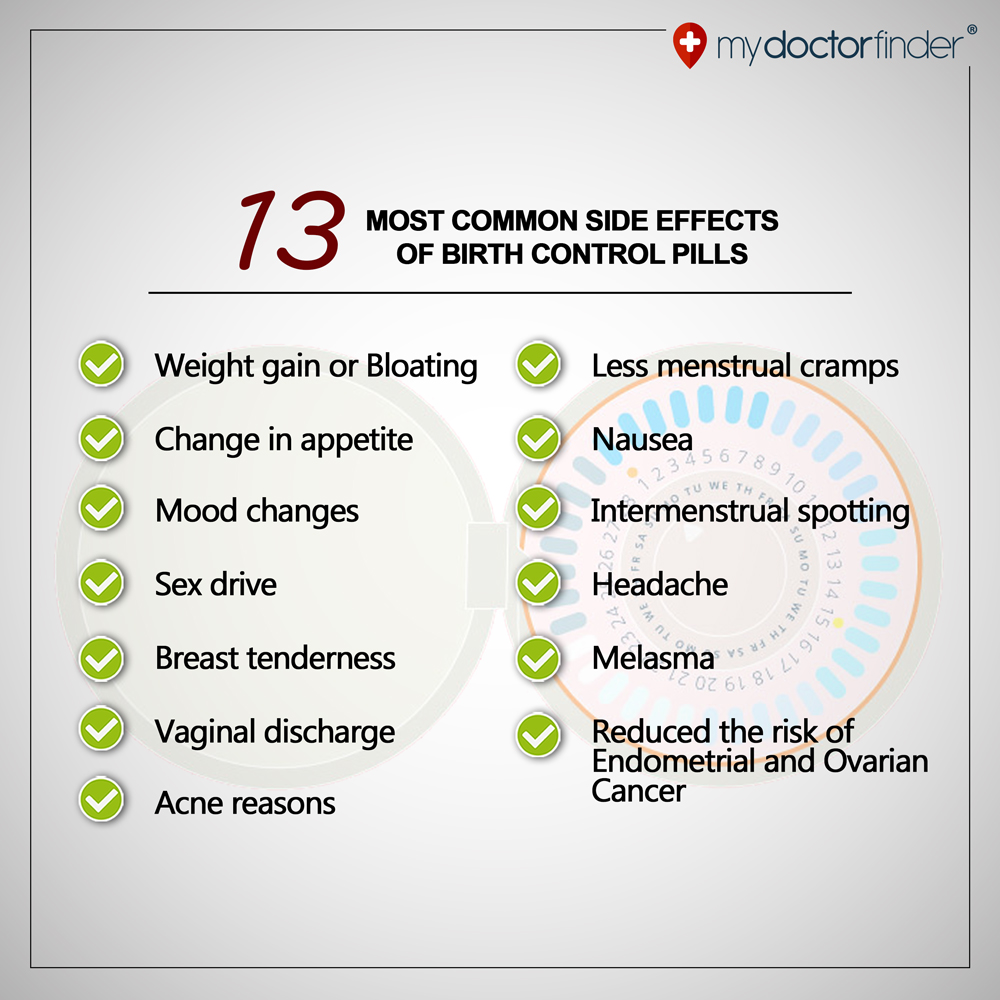 The cases did not include key information such as the time to onset of the event, the use of concomitant medications, the presence of past or current comorbidities, including psychiatric illness; the degree of asthma control; and the presence of other risk factors for the events. Of the remaining 34 cases that were better documented, many contained additional risk factors that may have contributed to the suicide such as the use of medications or presence of comorbidities associated with increased risk for self-harm or behavioral disturbances. Six cases specifically reported concerns about not receiving education from a health care professional regarding the potential for neuropsychiatric side effects.
The cases did not include key information such as the time to onset of the event, the use of concomitant medications, the presence of past or current comorbidities, including psychiatric illness; the degree of asthma control; and the presence of other risk factors for the events. Of the remaining 34 cases that were better documented, many contained additional risk factors that may have contributed to the suicide such as the use of medications or presence of comorbidities associated with increased risk for self-harm or behavioral disturbances. Six cases specifically reported concerns about not receiving education from a health care professional regarding the potential for neuropsychiatric side effects.
Using data from the FDA’s Sentinel System from January 1, 2010, to September 30, 2015, we investigated if there is an increased risk of hospitalized and treated outpatient depressive disorders, self-harm, and suicides associated with montelukast use for asthma compared to inhaled corticosteroids (ICS).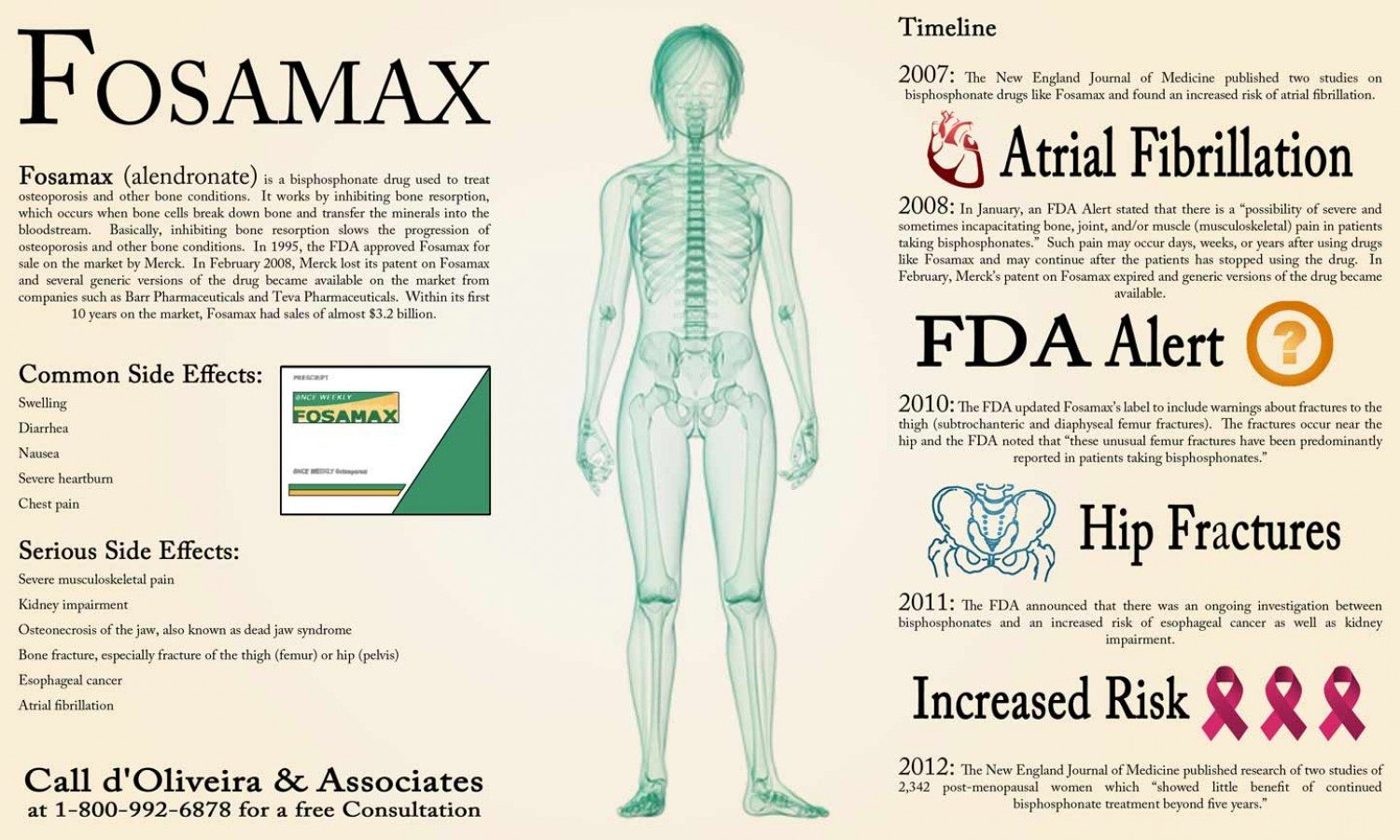 We also evaluated if the risk of neuropsychiatric adverse events with montelukast compared to ICS was modified by the 2008 FDA Early Communication and changes to the montelukast prescribing information, or was affected by age, sex, and/or psychiatric history. Patients (n=457,377) 6 years and older diagnosed with asthma and exposed to montelukast or ICS were matched 1:1 on propensity scores. The risk of inpatient depressive disorder associated with montelukast use compared to ICS was not significant (overall HR: 1.06; 95% CI: 0.90-1.24). There were no significant risks among males, females, patients 12 years and older, patients with a psychiatric history, or after the 2008 FDA communication and prescribing information changes. Exposure to montelukast was also not associated with self-harm (HR:0.92; 95% CI: 0.69-1.21) or modified self-harm (HR: 0.81; 95% CI: 0.63-1.05). Four suicides occurred (two exposed to montelukast, two exposed to ICS), all in patients older than 18 years with a psychiatric history.
We also evaluated if the risk of neuropsychiatric adverse events with montelukast compared to ICS was modified by the 2008 FDA Early Communication and changes to the montelukast prescribing information, or was affected by age, sex, and/or psychiatric history. Patients (n=457,377) 6 years and older diagnosed with asthma and exposed to montelukast or ICS were matched 1:1 on propensity scores. The risk of inpatient depressive disorder associated with montelukast use compared to ICS was not significant (overall HR: 1.06; 95% CI: 0.90-1.24). There were no significant risks among males, females, patients 12 years and older, patients with a psychiatric history, or after the 2008 FDA communication and prescribing information changes. Exposure to montelukast was also not associated with self-harm (HR:0.92; 95% CI: 0.69-1.21) or modified self-harm (HR: 0.81; 95% CI: 0.63-1.05). Four suicides occurred (two exposed to montelukast, two exposed to ICS), all in patients older than 18 years with a psychiatric history. Exposure to montelukast was significantly associated with a decreased risk of treated outpatient depressive disorder (overall hazard ratio [HR]: 0.91; 95% confidence interval [CI]: 0.89-0.93). Decreased risks were seen among patients with a history of a psychiatric disorder, in patients 12 to 17 years as well as 18 years and older, and in both females and males.
Exposure to montelukast was significantly associated with a decreased risk of treated outpatient depressive disorder (overall hazard ratio [HR]: 0.91; 95% confidence interval [CI]: 0.89-0.93). Decreased risks were seen among patients with a history of a psychiatric disorder, in patients 12 to 17 years as well as 18 years and older, and in both females and males.
The Sentinel study had limitations. The study relied on outcomes for which patients sought medical attention that were recorded in health care claims. Thus, it was unable to evaluate either the entire spectrum of neuropsychiatric events or events that did not result in a billed encounter. Some neuropsychiatric events may have been handled by discontinuation of the drug without a health care encounter. Most of the usage occurred after the 2008 FDA communication and prescribing information changes about the risk of neuropsychiatric events, so montelukast patients may have been informed to cease treatment should depressive symptoms develop, resulting in a decreased risk among montelukast users.:max_bytes(150000):strip_icc()/common-depo-provera-side-effects-906709_final-6d7738ec520e45eea7a4474fb7641d37.png) Lastly, the study was unable to adjust for socioeconomic status. However, a literature review did not reveal evidence that montelukast and ICS are prescribed disproportionally to patients of varying socioeconomic status. Patients with higher socioeconomic status may be more likely to seek asthma management through outpatient visits, resulting in increased surveillance for neuropsychiatric adverse events.
Lastly, the study was unable to adjust for socioeconomic status. However, a literature review did not reveal evidence that montelukast and ICS are prescribed disproportionally to patients of varying socioeconomic status. Patients with higher socioeconomic status may be more likely to seek asthma management through outpatient visits, resulting in increased surveillance for neuropsychiatric adverse events.
We also reviewed evidence from animal studies, which suggest montelukast could act directly on cells in the brain. Orally administered montelukast (10 mg/kg/day for 7 days) was detectable in brain tissue and cerebrospinal fluid in rats, providing evidence of its ability to cross the blood-brain barrier.1
Singulair instructions for use, price: Dosage, what helps
THERE ARE CONTRAINDICATIONS. POSSIBLE SIDE EFFECTS. A SPECIALIST’S CONSULTATION IS REQUIRED. Bronchial asthma
Author of the article
Dolgikh Natalia Vadimovna,
Diploma in pharmaceutical education: 105924 3510859 reg.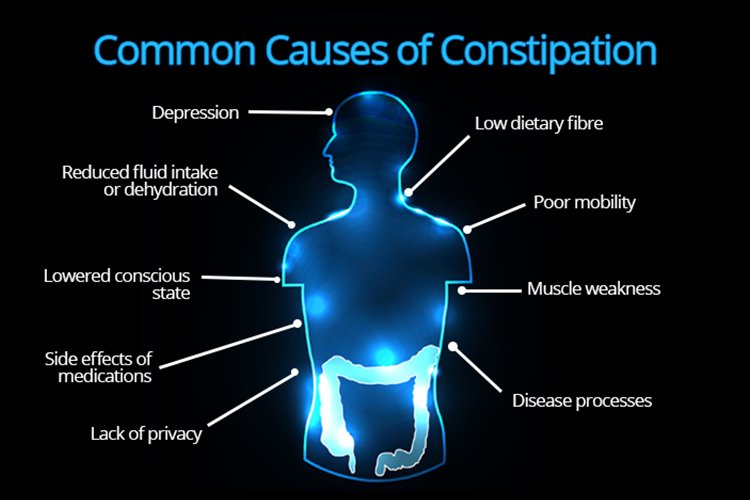 number 31944
number 31944
All authors
Contents of the article
- Singular: active substance
- Singular: dosage
- Singular: for adenoids
- Singular: hormonal drug or not
- Singular: side effects
- Summary
- Ask an expert on the topic of the article
Bronchial asthma is a common disease. According to modern data, almost 348 million people in the world suffer from this disease. Early signs of illness: shortness of breath or choking, dry cough and frequent shallow breathing with wheezing. If you have even one of the symptoms, it is recommended to consult a doctor in order to stop the process in time. Most patients with bronchial asthma respond well to conventional therapy, achieving disease control.
Pharmacist Natalia Dolgikh will tell you about Singulair: it will acquaint you with its active ingredient, dosages, side effects, as well as its use in adenoids.
Singulair: active ingredient
Singulair is a domestically produced drug in the form of classic and chewable tablets. The active substance of the drug is sodium montelukast, which belongs to the leukotriene receptor blockers. In simple terms, the drug reduces the effects of exposure to leukotrienes – substances that cause inflammation in the upper respiratory tract and nasal mucosa. Thanks to this, Singular:
- Relieves bronchial spasm
- Reduces mucus production
- Normalizes the body’s reaction to allergens
- Reduces vascular permeability
In connection with the above, it is easy to answer the question: what helps Singulair. The drug is prescribed for the prevention and long-term treatment of bronchial asthma, including to prevent bronchospasm before exercise. In addition, Singulair is used for allergies: to relieve symptoms of seasonal and year-round rhinitis.
Singular: dosage
Singulair is indicated for the treatment of adults and children. In order to exclude the division of the tablet into parts, the drug is available in several dosages:
In order to exclude the division of the tablet into parts, the drug is available in several dosages:
- Chewable tablets Singular 5 mg
- Singular 4 mg chewable tablets
- Singular 10 mg film-coated tablets
Dosages are distributed as follows: Singulair 4 mg for children 2 to 5 years old, dosage 5 mg for children 6 to 14 years old. Tablets at a dose of 10 mg are used to treat adults and children from 15 years of age.
All products Singular
20 reviews
Singular: with adenoids
Adenoids are hypertrophied or enlarged pharyngeal tonsils. Singulair is used in the treatment of chronic adenoiditis, combined with symptoms of allergic rhinitis – inflammation of the nasal mucosa. As a rule, in such situations, a combination of Singular and steroid hormones for topical use is used: in the form of an aerosol or inhalation.
The pharmacist adds: “It is important to note that the treatment is selected by the attending physician, based on the severity of the disease and the general well-being of the patient. It is impossible to take drugs on your own without the recommendation of a specialist.
It is impossible to take drugs on your own without the recommendation of a specialist.
Singulair: hormonal or not
No, Singulair does not contain hormones. However, hormonal agents are first-line drugs for the treatment of bronchial asthma. This means that glucocorticoids or steroid hormones are most effective in treating the disease.
Singulair: side effects
- Upper respiratory infections
- Hypersensitivity reactions, including anaphylactic shock
- Sleep disorders, including nightmares, as well as insomnia and somnambulism
- Dizziness and drowsiness
- Epistaxis
- Dryness of the oral mucosa
- Increased activity of liver enzymes
- Skin rash, itching and urticaria
- Joint and muscle pain
- Nausea and vomiting
- Involuntary urination in children
- Increased fatigue
- Violation of attention and memory
Singulair and alcohol are incompatible. The drug negatively affects the liver, and the joint intake with alcohol will enhance the effect at times. The risk of occurrence of other undesirable reactions also increases. For example, bleeding, cognitive impairment and the work of the gastrointestinal tract.
The drug negatively affects the liver, and the joint intake with alcohol will enhance the effect at times. The risk of occurrence of other undesirable reactions also increases. For example, bleeding, cognitive impairment and the work of the gastrointestinal tract.
Summary
- Singular is a domestically produced medicine in the form of classic and chewable tablets.
- The drug is prescribed for the prevention and long-term treatment of bronchial asthma, including the prevention of bronchospasm before exercise.
- Singulair is indicated for the treatment of adults and children.
- Singular is used in the treatment of chronic adenoiditis associated with symptoms of allergic rhinitis.
- Singulair does not contain hormones.
- Singulair and alcohol are incompatible.
Ask an expert about Article
Still have questions? Ask them in the comments below and our experts will answer you. There you can also share your experience with other Megatips readers.
There you can also share your experience with other Megatips readers.
Share Mega Tip
Like this article? Tell mom, dad, grandma and aunt Galya from the third entrance
Copy link
Singulair chewable tablets 4mg №14
Composition
1 coated tablet contains:
9000 2 Active ingredient: montelukast sodium 10.4 mg (equivalent to 10.0 mg free acid).
Excipients: hyprolose (hydroxypropyl cellulose) 4.0 mg, microcrystalline cellulose 89.3 mg, lactose monohydrate 89.3 mg, croscarmellose sodium 6.0 mg, magnesium stearate 1.0 mg.
The composition of the shell that covers the tablet: hyprolose (hydroxypropylcellulose) 1.73 mg, hypromellose (methylhydroxypropylcellulose) 1.73 mg, titanium dioxide (E171) 1.50 mg, iron oxide red (E172) 0.004 mg, iron oxide yellow (E172) 0.036 mg, carnauba wax 0.006 mg.
Dosage form
film-coated tablets
Description
Light cream, square film-coated tablets with MSD 117 engraved on one side and SINGULAIR on the other side.
Pharmacodynamics
Cysteinyl leukotrienes (LTC 4, LTD 4 , LTE 4 ) are potent inflammatory eicosanoid mediators secreted by various cells, including mast cells and eosin ofils. These important pro-asthmatic mediators bind to cysteinyl leukotriene receptors. Cysteinyl leukotriene type I receptors (CysLT 1 receptors) are present in the human airways (including bronchial smooth muscle cells, macrophages) and other proinflammatory cells (including eosinophils and some myeloid stem cells). Cysteinyl leukotrienes correlate with the pathophysiology of asthma and allergic rhinitis. In asthma, leukotriene-mediated effects include bronchospasm, increased mucus secretion, increased vascular permeability, and increased eosinophil counts. In allergic rhinitis, after exposure to an allergen, cysteinyl leukotrienes are released from pro-inflammatory cells of the nasal mucosa during the early and late phases of the allergic reaction, which is manifested by symptoms of allergic rhinitis./adderall-side-effects-to-consider-in-men-4125577-ffe5accb24994cf6851d5148b42fde35.png) An intranasal test with cysteinyl leukotrienes demonstrated an increase in airway resistance and symptoms of nasal obstruction.
An intranasal test with cysteinyl leukotrienes demonstrated an increase in airway resistance and symptoms of nasal obstruction.
Montelukast is a highly potent oral drug that significantly improves inflammation in asthma. According to biochemical and pharmacological analysis, montelukast binds with high affinity and selectivity to CysLT 1 receptors, without interacting with other pharmacologically important receptors in the respiratory tract (such as prostaglandin, cholinergic or (-adrenergic) receptors). Montelukast inhibits the physiological action of cysteinyl leukotrienes LTC 4 , LTD 4 and LTE 4 by binding to CysLT 1 receptors without stimulating these receptors. Montelukast inhibits CysLT receptors in the respiratory tract, as evidenced by the ability to block the development of bronchospasm in response to inhalation LTD 4 in patients with bronchial asthma. Doses of 5 mg are sufficient to relieve bronchospasm induced by LTD 4 .
Montelukast causes bronchodilation within 2 hours of ingestion and may supplement bronchodilation caused by 2 – adrenomimetics.
The use of montelukast in doses exceeding 10 mg per day, taken once, does not increase the effectiveness of the drug.
Pharmacokinetics
Absorption
Montelukast is rapidly and almost completely absorbed after oral administration. In adults, when taken on an empty stomach, coated tablets, 10 mg, the maximum concentration (C max ) is reached after 3 hours (T max ). The average oral bioavailability is 64%. Eating does not affect C max in blood plasma and the bioavailability of the drug.
Distribution
Montelukast is more than 99% bound to plasma proteins. The volume of distribution of montelukast at steady state is 8-11 liters on average.
Radiolabeled montelukast studies in rats indicate minimal penetration of the blood-brain barrier. In addition, the concentrations of the labeled drug 24 hours after administration were minimal in all other tissues.
In addition, the concentrations of the labeled drug 24 hours after administration were minimal in all other tissues.
Metabolism
Montelukast is extensively metabolized. In the study of therapeutic doses in adults and children, the concentration of montelukast metabolites in the equilibrium state in plasma is not determined.
Studies in in vitro using human liver microsomes have shown that cytochrome P450 isoenzymes 3A4, 2C8 and 2C9 are involved in the metabolism of montelukast. According to research conducted in vitro in human liver microsomes, montelukast at therapeutic plasma concentrations does not inhibit cytochrome P450 isoenzymes: 3A4, 2C9, 1A2, 2A6, 2C19 and 2D6.
Elimination
Plasma clearance of montelukast in healthy adults averages 45 ml/min. After ingestion of radioactively labeled montelukast, 86% of its amount is excreted in the feces within 5 days and less than 0.2% in the urine, which confirms that montelukast and its metabolites are excreted almost exclusively in the bile.
The half-life of montelukast in young healthy adults is 2.7 to 5.5 hours. The pharmacokinetics of montelukast remains almost linear at oral doses of more than 50 mg. When taking montelukast in the morning and evening, no differences in pharmacokinetics are observed. When taking 10 mg of montelukast 1 time per day, a moderate (about 14%) accumulation of the active substance in plasma is observed.
Peculiarities of pharmacokinetics in retail groups of patients
Gender
The pharmacokinetics of montelukast in women and men is similar.
Elderly patients
With a single oral dose of 10 mg of montelukast, the pharmacokinetic profile and bioavailability are similar in elderly and young patients. The plasma half-life of montelukast is slightly longer in the elderly. Dose adjustment in the elderly is not required.
Race
There were no differences in clinically significant pharmacokinetic effects in patients of different races.
Hepatic insufficiency
Patients with mild to moderate hepatic insufficiency and clinical manifestations of liver cirrhosis observed a slowdown in the metabolism of montelukast, accompanied by an increase in the area under the concentration-time pharmacokinetic curve (AUC) by approximately 41% after a single dose of the drug at a dose of 10 mg. The excretion of montelukast in these patients is slightly increased compared with healthy subjects (average half-life is 7.4 hours). Changes in the dose of montelukast for patients with mild to moderate hepatic insufficiency are not required. Data on the nature of the pharmacokinetics of montelukast in patients with severe hepatic insufficiency (more than 9Child-Pugh scores) no.
Renal insufficiency
Since montelukast and its metabolites are not excreted in the urine, the pharmacokinetics of montelukast in patients with renal insufficiency has not been evaluated. Dose adjustment for this group of patients is not required.
Indications for use
– Prevention and long-term treatment of bronchial asthma in adults and children from 15 years of age, including prevention of day and night symptoms of the disease, treatment of bronchial asthma in patients with hypersensitivity to acetylsalicylic acid and prevention of exercise-induced bronchospasm.
– Relief of day and night symptoms of seasonal and/or perennial allergic rhinitis in adults and children from 15 years of age.
Contraindications
There is no specific information on the treatment of overdose with Singulair. Overdose symptoms were not observed in clinical studies of long-term (22 weeks) treatment of adult patients with bronchial asthma with daily doses of Singulair up to 200 mg, or in short (about 1 week) clinical studies with daily doses of up to 900 mg.
There have been cases of acute overdose (taking at least 1000 mg of the drug per day) with Singulair in the post-registration period and during clinical trials in adults and children./lamictal-and-anxiety-380251_final-d213a02e86a24d67a08b83ab28b36e8c.png) Clinical and laboratory data indicated comparability of the safety profiles of the drug Singulair in children, adults and elderly patients. The most common side effects were thirst, drowsiness, vomiting, psychomotor agitation, headache, and abdominal pain. These side effects are consistent with the safety profile of Singulair.
Clinical and laboratory data indicated comparability of the safety profiles of the drug Singulair in children, adults and elderly patients. The most common side effects were thirst, drowsiness, vomiting, psychomotor agitation, headache, and abdominal pain. These side effects are consistent with the safety profile of Singulair.
Treatment in case of acute overdose is symptomatic.
There are no data on the effectiveness of peritoneal dialysis or hemodialysis of montelukast.
Use in pregnancy and lactation
Clinical studies of Singulair have not been conducted in pregnant women. Singular should be used during pregnancy and lactation only if the expected benefit to the mother outweighs the potential risk to the fetus or child. During the post-registration use of the drug Singulair, the development of congenital limb defects in newborns whose mothers took the drug Singulair during pregnancy has been reported. Most of these women were also taking other asthma medications during pregnancy. A causal relationship between the use of Singulair and the development of congenital limb defects has not been established.
A causal relationship between the use of Singulair and the development of congenital limb defects has not been established.
It is not known if Singular is excreted in breast milk. Since many drugs are excreted in breast milk, this should be taken into account when prescribing Singulair to breastfeeding mothers.
Side effects
In general, Singulair is well tolerated. Side effects are usually mild and. as a rule, do not require discontinuation of the drug. The overall frequency of side effects in the treatment of the drug Singulair is comparable to their frequency when taking placebo.
Children aged 2 to 5 years with asthma
573 patients aged 2 to 5 years participated in clinical trials of Singulair. In a 12-week placebo-controlled clinical trial, the only adverse event (AE) assessed as drug-related occurring in >.1% of patients taking Singulair and more frequently than in the placebo group was thirst. Differences in the incidence of this AE between the two treatment groups were not statistically significant.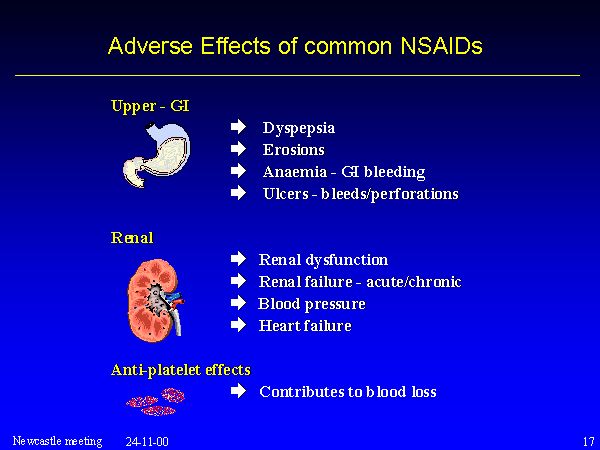
A total of 426 patients aged 2 to 5 years were treated with Singulair for at least 3 months. 230 for 6 months or more, and 63 patients for 12 months or more. With longer treatment, the AE profile did not change.
Children aged 2 to 14 years with seasonal allergic rhinitis
A 2-week placebo-controlled clinical trial with Singulair for the treatment of seasonal allergic rhinitis enrolled 280 patients aged 2 to 14 years. The drug Singulair was taken by patients once a day in the evening and was generally well tolerated, the safety profile of the drug was similar to that of placebo. No AEs were reported in this clinical study. that would be regarded as related to taking the drug, would be observed in 1% of patients taking the drug Singulair and more often than in the group of patients taking placebo.
Children aged 6 to 14 years with bronchial asthma
The safety profile of the drug in children was generally similar to that in adults and comparable to placebo.
In an 8-week placebo-controlled clinical trial, the only AE assessed as drug-related, occurring in >.1% of patients taking Singulair and more frequently than in the placebo group, was headache. The difference in frequency between the two treatment groups was not statistically significant. In growth rate studies, the safety profile in patients of this age group was consistent with the previously described safety profile of Singulair. With longer treatment (more than 6 months), the AE profile did not change.
Adults and children aged 15 years and older with bronchial asthma
In two 12-week, placebo-controlled, similarly designed clinical trials, the only AEs assessed as drug-related occurred in 1% of patients taking Singulair , and were more likely to experience abdominal pain and headache than in the placebo group. Differences in the frequency of these AEs between the two treatment groups were not statistically significant. With longer treatment (within 2 years), the AE profile did not change.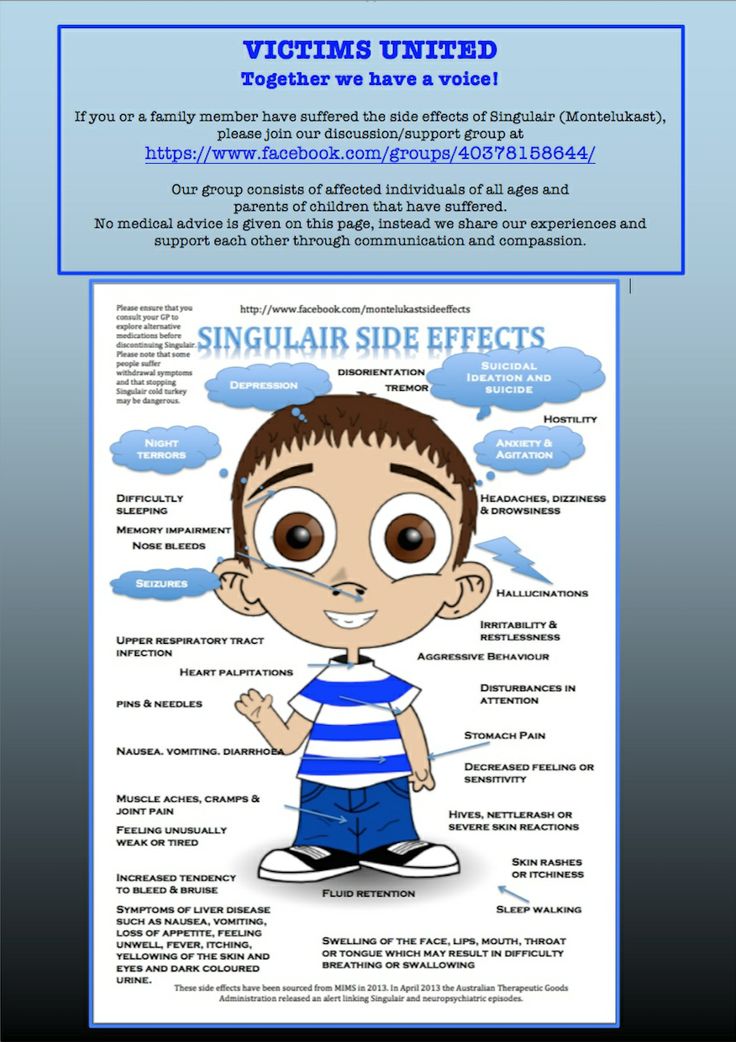
Adults and children aged 15 years and older with seasonal allergic rhinitis
Singulair was taken by patients once a day in the morning or evening and was generally well tolerated, the safety profile of the drug was similar to that of placebo. In placebo-controlled clinical trials, there were no AEs that were regarded as drug-related, were observed in 1% of patients taking Singulair, and more often than in the placebo group. In a 4-week placebo-controlled clinical study, the safety profile of the drug was similar to that in 2-week studies. The incidence of drowsiness when taking the drug in all studies was the same as when taking placebo.
Adults and children aged 15 years and older with perennial allergic rhinitis
Singulair was taken by patients once a day and was generally well tolerated. The safety profile of the drug was similar to the safety profile observed in the treatment of patients with seasonal allergic rhinitis and placebo. In these clinical studies, there were no AEs that would be regarded as associated with taking the drug, which would be observed in 1% of patients taking the drug Singulair, and more often than in the group of patients taking placebo. The incidence of drowsiness when taking the drug was the same as when taking placebo.
In these clinical studies, there were no AEs that would be regarded as associated with taking the drug, which would be observed in 1% of patients taking the drug Singulair, and more often than in the group of patients taking placebo. The incidence of drowsiness when taking the drug was the same as when taking placebo.
Pooled analysis of clinical trials
A pooled analysis of 41 placebo-controlled clinical trials was performed (35 studies in patients aged 15 years and older, 6 studies in patients aged 6 to 14 years) with using approved methods for assessing suicidality. Among 9929 patients taking Singulair and 7780 patients taking placebo in these studies, one patient with suicidal ideation was identified in the group of patients taking Singulair. None of the treatment groups experienced any suicide, suicide attempt, or other preparatory actions indicative of suicidal behavior.
A separate pooled analysis of 46 placebo-controlled clinical trials (35 trials in patients aged 15 years and older, 11 trials in patients aged 3 months to 14 years) was performed to assess adverse behavioral effects (ABE). Among 1673 patients in these studies taking Singulair and 8827 patients taking placebo, the percentage of patients with at least one SPE was 2.73% among those taking Singulair and 2.27% among those taking placebo: the odds ratio was 1.12(95% confidence interval 0.93, 1.361).
Among 1673 patients in these studies taking Singulair and 8827 patients taking placebo, the percentage of patients with at least one SPE was 2.73% among those taking Singulair and 2.27% among those taking placebo: the odds ratio was 1.12(95% confidence interval 0.93, 1.361).
During the post-registration use of the drug, the following identified AEs were reported:
infectious and parasitic diseases: infections of the upper respiratory tract,
disorders of the blood and lymphatic system: 90 144 increased bleeding tendency, thrombocytopenia ,
immune system disorders: hypersensitivity reactions including anaphylaxis, very rare (<, 1/10000) eosinophilic liver infiltration,
mental disorders: agitation, including aggressive behavior or hostility, anxiety, depression, disorientation, attention disturbance, abnormal dreams, hallucinations, insomnia, memory impairment, psychomotor activity (including irritability, restlessness and tremor), somnambulism, suicidal thoughts and behavior (suicidality),
nervous system disorders: dizziness, drowsiness, paresthesia/hypesthesia, very rare (<, 1/10000) convulsions,
cardiac disorders: palpitations,
respiratory, thoracic and mediastinal disorders: epistaxis, pulmonary eosinophilia,
gastrointestinal disorders: diarrhea, dyspepsia, nausea, vomiting, pancreatitis; liver),
rut and subcutaneous tissue disorders: angioedema, tendency to hematoma, erythema nodosum, erythema multiforme, pruritus, rash, urticaria,
musculoskeletal and connective tissue disorders: arthralgia, mi algia, including muscle cramps:
disorders of the kidneys and urinary tract: enuresis in children,
general disorders and disorders at site introductions: asthenia (weakness)/fatigue, edema, pyrexia.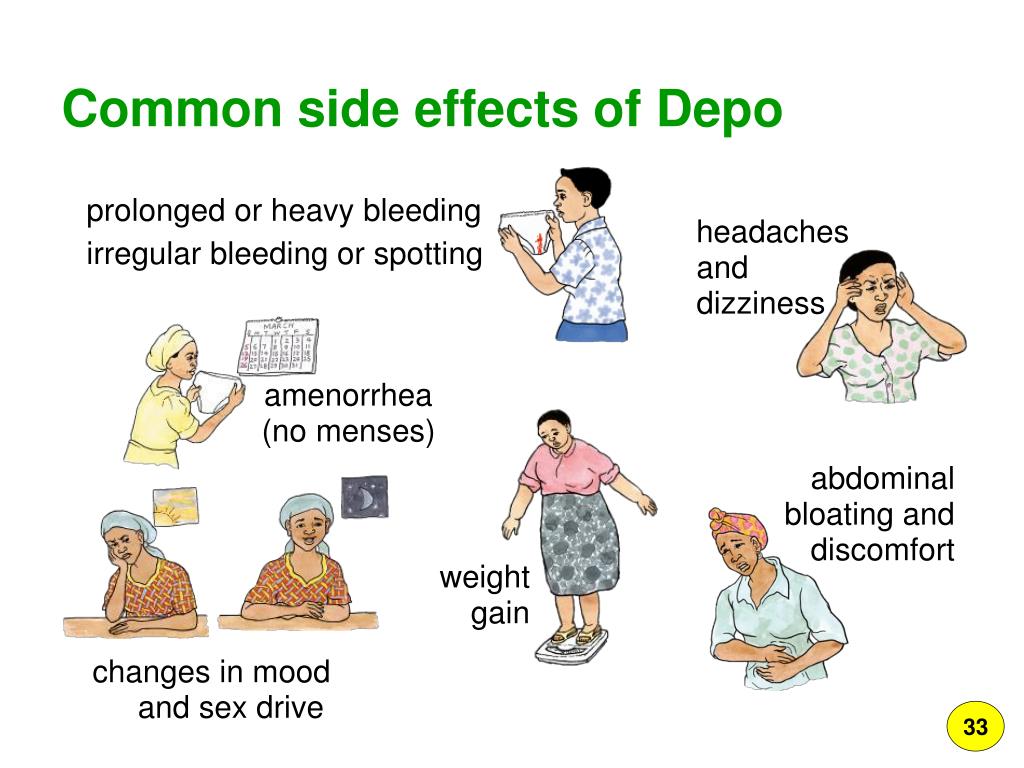
Interactions
Singulair may be administered with other medicinal products commonly used for the prevention and long-term treatment of asthma and/or the treatment of allergic rhinitis. The recommended therapeutic dose of montelukast did not have a clinically significant effect on the pharmacokinetics of the following drugs: theophylline, prednisone, prednisolone, oral contraceptives (ethinyl estradiol / norethisterone 35/1), terfenadine, digoxin and warfarin.
The AUC value of montelukast is reduced by about 40% while taking phenobarbital, so this does not require changes in the dosing regimen of the drug Singulair. in vitro studies found that montelukast inhibits the CYP 2C8 isoenzyme of the cytochrome P450 system, however, in the study of drug interactions in vivo montelukast and rosiglitazone with the participation of the CYP 2C8 isoenzyme of the cytochrome P450 system) it was shown that that montelukast did not inhibit the CYP 2C8 isoenzyme. Therefore, no effect of montelukast on CYP2C8-mediated drug metabolism (eg, paclitaxel, rosiglitazone, repaglinide) is expected. Research in vitro showed that montelukast is a substrate of CYP2C8 isoenzymes. 2C9 and 3A4. Data from a clinical drug interaction study between montelukast and gemfibrozil (an inhibitor of both CYP2C8 and 2C9) demonstrate that gemfibrozil increases the effect of systemic exposure to montelukast by 4.4 times. Co-administration of itraconazole, a potent inhibitor of CYP3A4, with gemfibrozil and montelukast did not lead to an additional increase in the effect of systemic exposure to montelukast. The effect of gemfibrozil on systemic exposure to montelukast cannot be considered clinically relevant based on safety data at doses greater than the approved adult dose of 10 mg (e.g. at 200 mg/day in adults for 22 weeks and up to 900 mg/day for approximately one week, no clinically significant adverse effects were observed). Thus, when co-administered with gemfibrozil, dose adjustment of montelukast is not required.
Therefore, no effect of montelukast on CYP2C8-mediated drug metabolism (eg, paclitaxel, rosiglitazone, repaglinide) is expected. Research in vitro showed that montelukast is a substrate of CYP2C8 isoenzymes. 2C9 and 3A4. Data from a clinical drug interaction study between montelukast and gemfibrozil (an inhibitor of both CYP2C8 and 2C9) demonstrate that gemfibrozil increases the effect of systemic exposure to montelukast by 4.4 times. Co-administration of itraconazole, a potent inhibitor of CYP3A4, with gemfibrozil and montelukast did not lead to an additional increase in the effect of systemic exposure to montelukast. The effect of gemfibrozil on systemic exposure to montelukast cannot be considered clinically relevant based on safety data at doses greater than the approved adult dose of 10 mg (e.g. at 200 mg/day in adults for 22 weeks and up to 900 mg/day for approximately one week, no clinically significant adverse effects were observed). Thus, when co-administered with gemfibrozil, dose adjustment of montelukast is not required. Based on 9 results from studies in in vitro no clinically significant drug interactions with other known inhibitors of CYP2C8 (eg trimethoprim) are expected. In addition, the co-administration of montelukast with itraconazole alone did not lead to a significant increase in the effect of systemic exposure to montelukast.
Based on 9 results from studies in in vitro no clinically significant drug interactions with other known inhibitors of CYP2C8 (eg trimethoprim) are expected. In addition, the co-administration of montelukast with itraconazole alone did not lead to a significant increase in the effect of systemic exposure to montelukast.
Combination cookies with bronchodilators
Singulair is a reasonable adjunct to bronchodilator monotherapy if the latter do not provide adequate control of bronchial asthma. Upon reaching the therapeutic effect of treatment with Singulair, a gradual decrease in the dose of bronchodilators can be started.
Combination treatment with inhaled glucocorticosteroids
Treatment with Singulair provides additional therapeutic benefit to patients using inhaled glucocorticosteroids. Upon reaching stabilization of the condition, you can begin a gradual decrease in the dose of glucocorticosteroid under the supervision of a physician.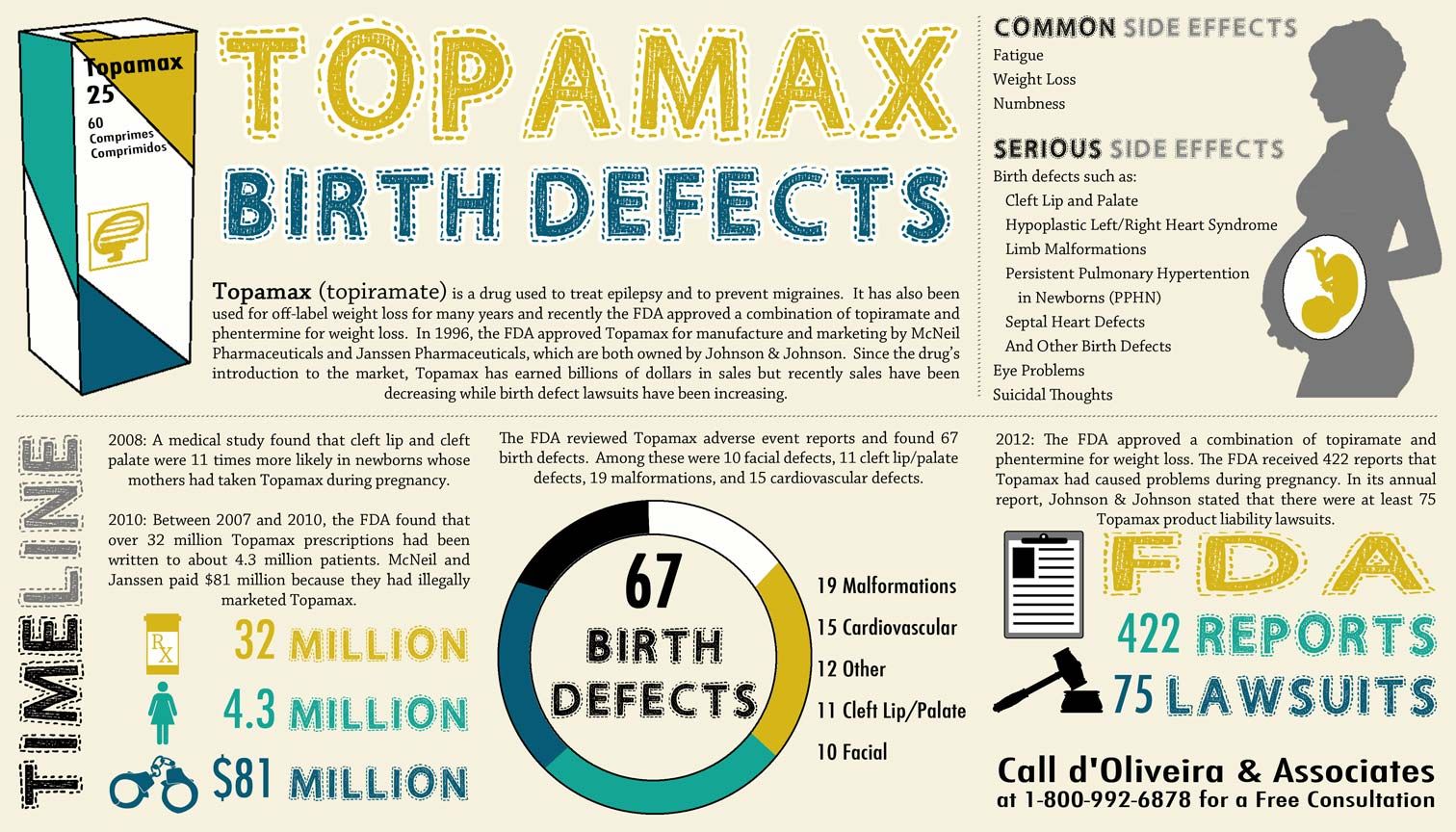 In some cases, the complete abolition of inhaled glucocorticosteroids is acceptable, however, a sharp replacement of inhaled glucocorticosteroids with Singulair is not recommended.
In some cases, the complete abolition of inhaled glucocorticosteroids is acceptable, however, a sharp replacement of inhaled glucocorticosteroids with Singulair is not recommended.
Dosage and administration
Inside 1 time per day, regardless of food intake. For the treatment of bronchial asthma, Singulair should be taken in the evening. In the treatment of allergic rhinitis dose can be taken at any time of the day at the request of the patient. Patients suffering from bronchial asthma and allergic rhinitis should take one tablet of the drug Singular 1 time per day in the evening.
Adults and children aged 15 and over
The dose for adults and children over 15 years of age is one film-coated tablet. 10 mg per day.
General recommendations
The therapeutic effect of Singulair on parameters reflecting the course of bronchial asthma develops within the first day. The patient should continue to take Singular both during the period of achieving control of the symptoms of bronchial asthma, and during periods of exacerbation of bronchial asthma.
For elderly patients, patients with renal insufficiency, as well as patients with mild or moderate hepatic impairment, and also depending on sex, a special dose selection is not required.
Administering Singulair concomitantly with other asthma treatments
Singular can be added to a patient’s treatment with bronchodilators and inhaled glucocorticosteroids (see section Interactions with Other Drugs).
Overdose
There is no specific information on the treatment of overdose with Singulair. Overdose symptoms were not observed in clinical studies of long-term (22 weeks) treatment of adult patients with bronchial asthma with daily doses of Singulair up to 200 mg, or in short (about 1 week) clinical studies with daily doses of up to 900 mg.
There have been cases of acute overdose (taking at least 1000 mg of the drug per day) with Singulair in the post-registration period and during clinical trials in adults and children. Clinical and laboratory data indicated comparability of the safety profiles of the drug Singulair in children, adults and elderly patients.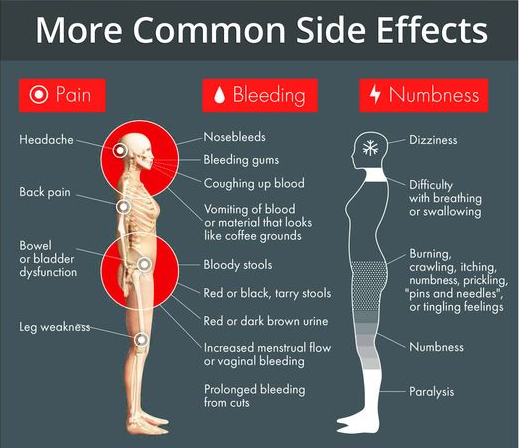 The most common side effects were thirst, drowsiness, vomiting, psychomotor agitation, headache, and abdominal pain. These side effects are consistent with the safety profile of Singulair.
The most common side effects were thirst, drowsiness, vomiting, psychomotor agitation, headache, and abdominal pain. These side effects are consistent with the safety profile of Singulair.
Treatment in case of acute overdose is symptomatic.
There are no data on the effectiveness of peritoneal dialysis or hemodialysis of montelukast.
Cautions
The efficacy of Singulair oral in the treatment of acute asthma attacks has not been established, therefore Singulair tablets are not recommended for the treatment of acute asthma attacks. Patients should be instructed to carry emergency asthma medications (short-acting inhaled beta-2-agonists) with them at all times.
Do not stop taking Singulair during an asthma exacerbation and the need to use rescue drugs to stop attacks (short-acting inhaled beta-2 agonists).
Patients with known allergy to acetylsalicylic acid and other non-steroidal anti-inflammatory drugs (NSAIDs) should not take these drugs during treatment with Singulair because Singulair, while improving respiratory function in patients with allergic bronchial asthma, however, cannot completely prevent the induced they have NSAID bronchoconstriction.
The dose of inhaled glucocorticosteroids used concomitantly with Singulair can be gradually reduced under the supervision of a physician, but abrupt replacement of inhaled or oral glucocorticosteroids with Singulair should not be carried out. Neuropsychiatric disorders have been described in patients treated with Singulair (see section Adverse Effects). Given that these symptoms may have been caused by other factors, it is not known if they are related to the use of Singulair. The physician should discuss these AEs with patients and/or their parents/guardians. Patients and/or their parents/guardians should be advised that if these symptoms occur, the attending physician should be informed.
In rare cases, patients treated with anti-asthma drugs, including leukotriene receptor antagonists, have experienced one or more of the following AEs: eosinophilia, rash, worsening pulmonary symptoms, cardiac complications, and/or neuropathy, sometimes diagnosed as Churg-Strauss syndrome, systemic eosinophilic vasculitis. These cases have sometimes been associated with dose reduction or discontinuation of oral glucocorticosteroid therapy. Although a causal relationship of these AEs with leukotriene receptor antagonist therapy has not been established, caution should be exercised in patients taking Singulair: appropriate clinical monitoring should be carried out in such patients.
These cases have sometimes been associated with dose reduction or discontinuation of oral glucocorticosteroid therapy. Although a causal relationship of these AEs with leukotriene receptor antagonist therapy has not been established, caution should be exercised in patients taking Singulair: appropriate clinical monitoring should be carried out in such patients.
Singulair 10 mg film-coated tablets contains lactose monohydrate. Patients with a rare form of hereditary galactose intolerance, congenital lactase deficiency or glucose-galactose malabsorption should not take the drug Singulair coated tablets, 10 mg.
Use in the elderly
No age-related differences in the efficacy and safety profiles of Singulair have been identified.
Effects on ability to drive and use machines
Singulair is not expected to affect the ability to drive and use machines. However, individual reactions to the drug may be different. Some side effects (such as dizziness and drowsiness), which have been reported to occur very rarely with the use of the drug Singular, may affect the ability of some patients to drive vehicles and operate machines.

